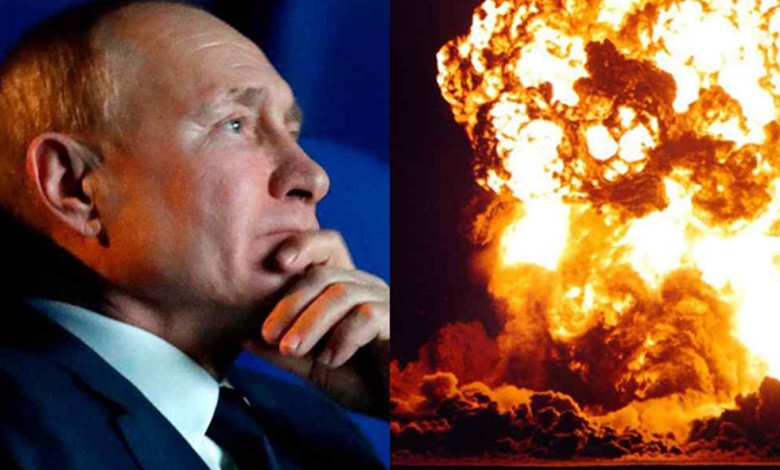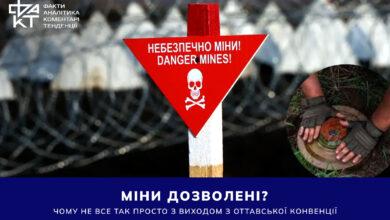Nuclear deterrence: Russia’s understanding of it, does it threaten the world

It has only been a few days since Russian President Putin announced changes to the country’s nuclear doctrine. The Minister of Foreign Affairs of the Russian Federation, Sergey Lavrov, did not hesitate and accused the West of using Ukraine as a tool for a strategic victory over Moscow, adding that Europe is also preparing to “throw into this suicidal adventure.” Lavrov’s rhetoric at the UN General Assembly, as always, testified to the Kremlin’s desire to manipulate the international situation, creating the image of a Western threat in order to legitimize Russia’s aggressive actions. It complemented the approaches of Putin, who uses every opportunity to create the illusion of external aggression, which allows him to strengthen domestic support and justify the escalation of the conflict.
Intimidation strategy
Putin likes to routinely brandish nuclear weapons and use nuclear rhetoric as a tool to increase pressure in international relations. In the run-up to Russia’s full-scale invasion of Ukraine in February 2022, he oversaw a nuclear strike scenario exercise. Since then, his numerous nuclear threats have put US officials on constant tension, as they highlight the danger of an escalating conflict and call global security into question. Thus, Russia uses nuclear rhetoric not only for domestic propaganda, but also as a tool of influence in the international arena, trying to force the West to exercise caution and moderation in its support for Ukraine.
This style of behavior of Putin is part of his strategy of intimidation aimed not only at Ukraine, but also at the West, especially the United States. By using the threat of nuclear weapons, he seeks to increase fear among the international community by deterring active action by NATO and the US in Russia’s war against Ukraine.
The threat of nuclear escalation has accompanied the war in Ukraine since its very beginning. Shortly before the invasion, Putin reminded the world that his country was “one of the most powerful nuclear powers” and shortly thereafter put his nuclear forces on high alert. His nuclear rhetoric changed, sometimes intensifying, then waning in different periods.
Work on updating the Russian nuclear doctrine began several months before its new format was made public. Putin first announced this in June. He noted that this is due to the emergence of new elements related to the “lowering of the threshold for the use of nuclear weapons” by the “probable adversary”.
This week, the Russian president revealed the contours of Russia’s updated nuclear doctrine at a meeting of the so-called permanent conference of the Russian Security Council on nuclear deterrence in the Kremlin, which was timed to coincide with the meeting of the presidents of Ukraine and the United States at the White House. Putin said that Moscow would consider an attack by a non-nuclear state, carried out with the support of a nuclear state, “a joint attack on the Russian Federation.” He also added that a nuclear response can be considered after receiving reliable information about the mass launch of air and space strike weapons and their crossing of our state border. These are strategic and tactical aircraft, cruise missiles, UAVs, hypersonic and other aircraft.
In other words, Putin issued a warning to Washington and Ukraine’s other allies amid Kiev’s appeal to the United States for long-range weapons that would allow it to strike targets deep in Russia.
Nuclear threats are a consequence of Russia’s failures
Chairman of the NATO Military Committee, Admiral Rob Bauer, believes that Vladimir Putin’s latest threats to revise the nuclear doctrine are a consequence of Russia’s failure to achieve the strategic goals of the war against Ukraine.
In exclusive interview Interfax-Ukraine, he comments on Putin’s statements that aggression by a non-nuclear state with the support of a nuclear state will be seen as a joint strike on Russia, including threats from missiles, drones and aviation.
“Russia has not achieved any of its strategic goals: capturing Kyiv in five days, overthrowing the government and installing a puppet regime. That’s why I think the Russians are very disappointed and worried about their failures.” – says the admiral.
Rob Bauer disputes Putin’s claim that countries supporting Ukraine are part of the war: “We are not participants in the war. What we are doing is in line with the UN charter: we are helping a nation that is busy defending itself against an aggressor. Russia is the aggressor; they invaded Ukraine, a sovereign state with internationally recognized borders, and violated all international rules”. The head of the NATO military committee explains: “If I follow the argument of the Russians, it means that in fact China, North Korea and Iran are also part of the war. So I think that Putin’s reasoning is inconvenient, at least for China. The bottom line is this: Russia is waging an illegal war. We support Ukraine in a legal way, because Ukraine is defending itself against illegal invasion.”
Therefore, Ukraine’s attacks on Russia comply with international law: self-defense is not limited to borders. A state may attack an aggressor to weaken its ability to continue the conflict. This is a military logic that is consistent with the law of armed conflicts.
Should Putin’s new red lines be taken seriously? Admiral Rob Bauer believes that everything the Russians say should be taken seriously, despite the fact that Putin has repeatedly changed his approaches to previous red lines.
How does the Kremlin understand nuclear deterrence?
Nuclear deterrence, as a military strategy, is based on the concept that a country possessing nuclear weapons can deter potential aggressors from attacking through fear of a retaliatory strike. In the classical sense, this concept assumes that nuclear powers will deter each other from conflict, because the consequences of a nuclear war could be catastrophic for all parties.
In the case of Russia, nuclear deterrence is an important element of its military doctrine, but its use differs from the classical approach. Traditional nuclear deterrence involves maintaining stability between states through mutual fear of nuclear escalation. For example, during the Cold War, the USA and the USSR had nuclear weapons, which prevented them from direct military conflict.
Russia has adapted the concept of nuclear deterrence to its geopolitical interests. It uses nuclear weapons not only for deterrence, but also as a tool of blackmail. Vladimir Putin has repeatedly threatened nuclear weapons to intimidate Western countries and limit their military aid to Ukraine. Russia often demonstrates its willingness to use nuclear weapons not only to deter aggression, but also as an element of psychological warfare. This includes public statements about the possibility of using nuclear weapons if Russia feels threatened, even by non-nuclear states that receive support from nuclear nations.
Such behavior causes serious concern among the international community, because it lowers the threshold for the use of nuclear weapons and can lead to unpredictable escalations. In conditions where Russia may consider conventional military actions a critical threat to its security, its nuclear threats become a tool for manipulating the international situation.
Thus, although Russia formally adheres to the principles of nuclear deterrence, its approaches are significantly different from the classical ones, which makes this strategy more dangerous in the context of modern international relations.
At the Institute for the Study of War noted, that the traditional rattling of nuclear weapons is done within the framework “campaigns of reflexive control to influence Western policy-makers”.
Is the new military doctrine of the Russian Federation really new?
Maksym Starchak of the Center for International and Defense Policy at Queen’s University notes, that Russia’s new nuclear doctrine clarifies the conditions for the use of nuclear weapons, but does not change the main reasons for their use. Previously, a ballistic missile attack was a prerequisite for the use of nuclear weapons, but now this applies to all means of air and space attack.
The expert notes that, in fact, it is already considered a threat to strategic deterrence forces. In the existing doctrine, there is a provision about aggression against Russia with the use of conventional weapons, which endangers its existence, as well as about the impact on objects that can disrupt the actions of Russian nuclear forces in response.
Starczak emphasizes that the previous provisions of the doctrine were so general that they allowed their application in different situations at the same time. He also notes that Belarus received a nuclear umbrella in the event of an attack, which was already recorded in the military doctrine of the Union State. The question that the participation of a non-nuclear state in aggression with the support of a nuclear state can lead to a nuclear attack has already been fixed in the Budapest Memorandum of 1994, signed by Russia.
And this is a paradoxical situation. Russia, having violated the Budapest Memorandum, in which it undertook to respect the territorial integrity of Ukraine in exchange for giving up nuclear weapons, is now trying to use this document to justify its actions. The Russian leadership seeks to show that the threat from other countries, even if it is aggression from non-nuclear states, is a sufficient reason for the possible use of nuclear weapons, despite the fact that their actions against Ukraine are already undermining the foundations of these obligations.
The vagueness of wording in nuclear doctrines usually serves to deter a potential enemy, but in a situation where Russia considers certain Ukrainian territories its own, the question arises: what exactly is considered aggression? For example, will Russia perceive the launch of Ukrainian missiles or fighter jets over Zaporizhzhia as a threat? Pavlo Podvig, head of the “Nuclear Weapons of Russia” project, notes that new formulations in Russia’s nuclear doctrine may create risks for international security.
On the other hand, the well-known Ukrainian expert and head of the Come Back Alive Foundation, Taras Chmut, draws attention to the fact that Russia, being vulnerable, may be prone to more radical actions, such as the use of tactical nuclear weapons. This highlights the risk that a system that feels threatened with collapse may resort to extremes in attempts to stop the development of the situation, which is particularly worrying for Ukraine and the international community.
Thus, the situation remains tense, and the risk of using nuclear weapons, even tactical ones, remains an urgent issue for analysis and strategic planning.





